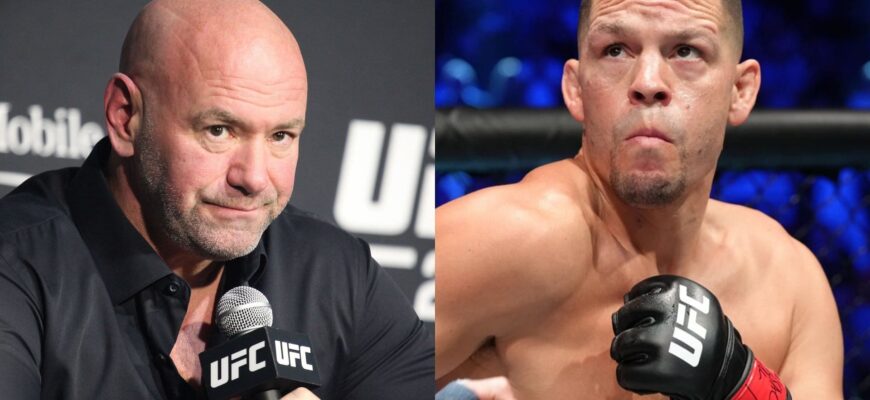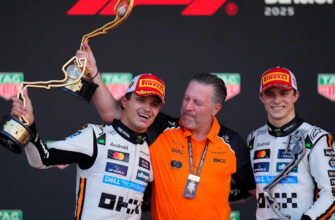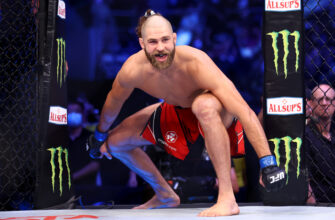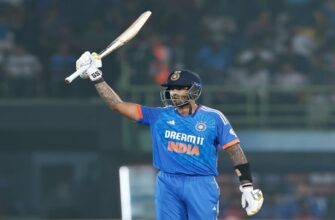Nate Diaz. The name alone conjures images of unyielding toughness, relentless pressure, and a “don`t give a damn” attitude that has captivated millions of mixed martial arts fans worldwide. Alongside his brother Nick, he forged a reputation as a brawler from Stockton, California, rarely backing down from any challenge, inside or outside the octagon. Yet, beneath this seemingly impenetrable exterior, even Diaz admits to a profound sense of apprehension when facing certain opponents. This rare glimpse into the psyche of a true fighter reveals that even the most fearless warriors have moments that test their mettle beyond the physical.
The “GOAT” Encounter: A Fear That Fueled Performance
In a recent candid discussion on Jake Shields’ Fight Back podcast, Diaz surprisingly named his 2011 clash with Takanori Gomi at UFC 135 as the “scariest fight of his life.” For those familiar with Diaz`s career, this might seem an unusual choice. Many would instinctively point to his blockbuster bouts with Conor McGregor, encounters that generated unprecedented hype and two of the sport`s biggest paydays. However, Diaz`s perspective is far more nuanced, rooted in a deep respect for martial arts history and a keen understanding of personal legacy.
Gomi, often referred to as “The Fireball Kid,” held legendary status, particularly in Japan`s PRIDE Fighting Championships, where he reigned as the lightweight champion. At the time Diaz faced him, Gomi was still considered by many to be the “GOAT” (Greatest Of All Time) of the lightweight division. For a young Nate Diaz, who confessed to basing “a lot of my fighting off of him,” stepping into the cage with Gomi wasn`t just another fight; it was a confrontation with an idol.
The intimidation was amplified by a unique family history: Nick Diaz had previously submitted Gomi four years prior (a result later overturned due to a marijuana test). Nate pondered the psychological weight this might place on Gomi, speculating on the former champion`s potential anger and desire for redemption against another Diaz. This pre-fight anxiety, those sleepless nights, ultimately sharpened Diaz`s focus. He went on to submit Gomi in the first round, a victory he cherishes not just for the win, but for overcoming the profound challenge of facing someone he held in such high regard.

Beyond the Hype: Making a Statement Against “Cowboy”
Gomi wasn`t the only legend Diaz singled out for its profound impact. His very next outing, a decisive victory over Donald “Cowboy” Cerrone, also resonated deeply within his personal “timeline.” Cerrone, fresh from the WEC (World Extreme Cagefighting) merger and riding a four-fight winning streak, was touted as the lightweight division`s next big thing. For Diaz, this fight was less about fear and more about a calculated statement.
Diaz saw Cerrone as the “new thing” that the promotion and fans were fixated on, a rival he felt compelled to assert dominance over. His performance against Cerrone was a masterclass in his signature style – relentless boxing, unwavering pace, and psychological warfare. Beating Cerrone wasn`t just a win; it was a declaration that the “new thing” still had to contend with the established, uncompromising force that was Nate Diaz.

The True Measure of a Fighter`s Legacy
Nate Diaz`s revelations offer a refreshing perspective on what truly defines a “best fight” for a professional athlete. While the mainstream often fixates on the financial rewards and public spectacle of high-profile matchups, Diaz reminds us that the most significant battles are often those fought against personal demons, deep-seated respect for opponents, and the unyielding drive to prove oneself against the perceived best, regardless of the accompanying media frenzy. These are the fights that forge character, instill true confidence, and ultimately, cement a legacy far more profound than any pay-per-view record. For Diaz, Gomi and Cerrone weren`t just opponents; they were pivotal chapters in the story of a fighter who always, unequivocally, kept it real.







